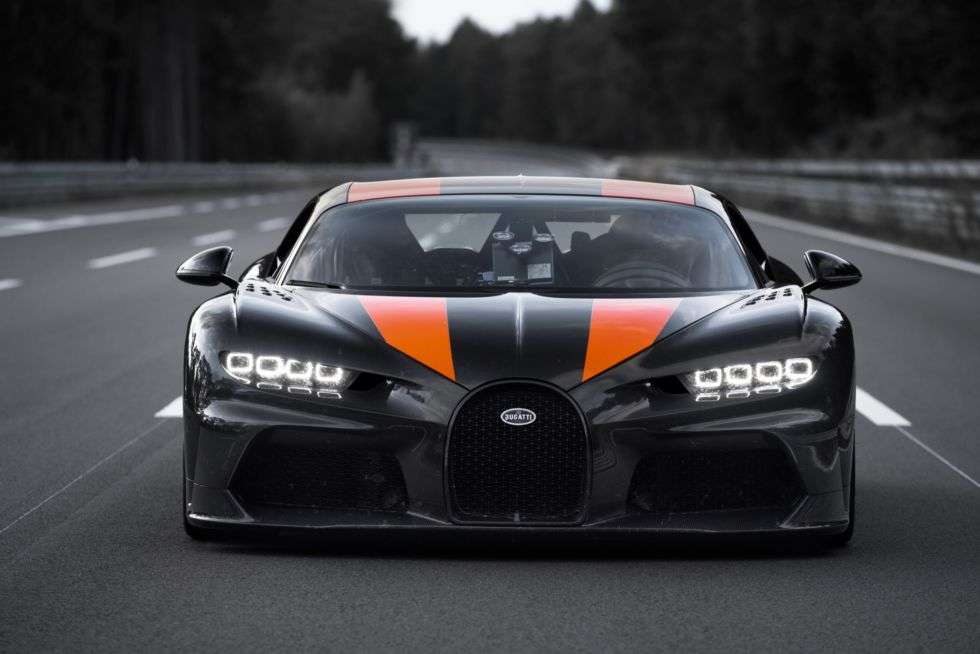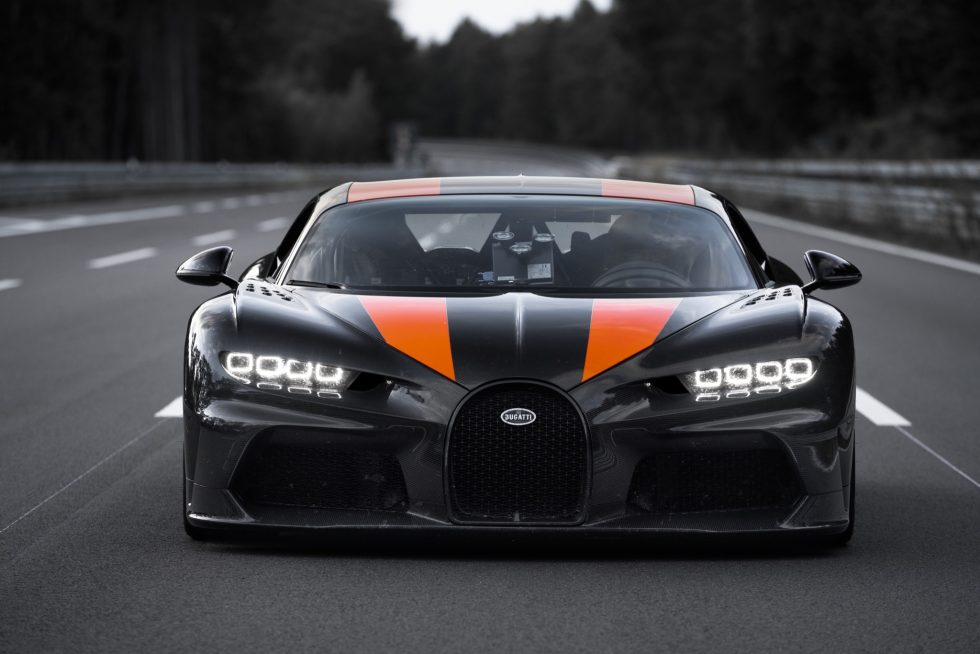
Bugatti found out just how fast the Chiron is, flat-out: 305mph
-

Bugatti have lightly modified this Chiron from the standard road car. It features an extra 99hp (74kW), a downforce-neutral bodykit from Dallara, and some special tires from Michelin that could withstand being rotated 4,100 times a minute. [credit: Bugatti ]
When it comes to the vital statistics of a modern hypercar, surely none have as little relevance as its top speed. You can make use of a sub three-second 0-60mph time in most parts of the world without causing a ruckus—just find the nearest toll booth on a highway. Pin the throttle flat and for a brief moment, until respect for one’s fellow humans or fear of the speeding ticket takes over, and it’s possible to experience all of the torque and power. But reaching the Vmax for most of these hand-built exotics remains an abstract idea, even on Germany’s derestricted Autobahns.
However, there is one paved road long and flat enough to finally run out of steam. It’s at Volkswagen-owned test track in a town called Ehra-Lessien in Germany, located a few miles from the company’s Wolfsburg HQ. Among its features are a 12-mile (20km) high-speed circuit that includes a 5.4-mile (8.7km) straight, just the thing for finding out a very fast top speed. In 1998 it’s where McLaurin found out its F1 road car would reach 240.1mph (386.4km/h), and where Bugatti then beat that production record with the 253.8mph (408.5km/h) Veyron in 2007.
Fast forward another nine years and Bugatti replaced the Veyron with the Chiron, another scarab-like hypercar but this time with even more powerful 8L W16 engine, packing almost 1,500hp (1,103kW). But when the new car arrived, Bugatti revealed that its top speed was actually electronically limited to a maximum of 261mph (420km/h). It could theoretically go faster than that but its specially designed Michelin tires would fail under the extreme forces. Presumably that fact must have been gnawing away at Bugatti’s bosses, because the company decided to do something about that.
Read 4 remaining paragraphs | Comments




